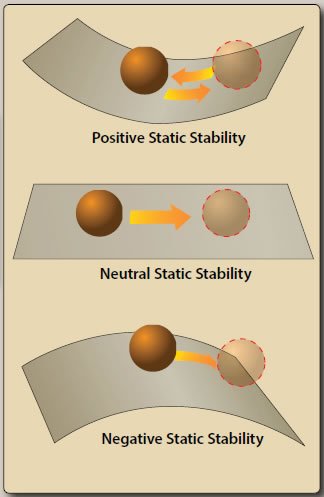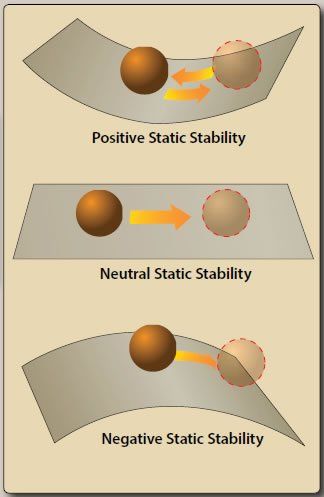When considering an airplanes stability, we need to distinguish between static and dynamic stability. The FAAs Pilots Handbook of Aeronautical Knowledge, FAA-H-8083-25A, says the static version relates to the aircrafts initial response when disturbed from a given AoA, slip, or bank. It comes in three flavors, each of which are depicted at right:

– Positive static stability-the initial tendency of the aircraft to return to the original state of equilibrium after being disturbed.
– Neutral static stability-the initial tendency of the aircraft to remain in a new condition after its equilibrium has been disturbed.
– Negative static stability-the initial tendency of the aircraft to continue away from the original state of equilibrium after being disturbed.
Dynamic stability, meanwhile, basically involves the airplanes ability to dampen out an oscillation and also comes in the three basic flavors. The real question is whats more important for instrument work? And the answer? An airplane with positive static stability is a far better instrument platform than one with neutral or negative stability.
In practical terms, which airplane would you rather fly on the gauges, a Pitts Special or a Cessna Caravan? The Pitts-with aerobatic performance in mind-is designed to minimize positive stability in favor of neutral or even slightly negative stability. The less stability designed into an airframe, the more maneuverable it is. Generally, maneuverability is not what we want from an instrument platform.




